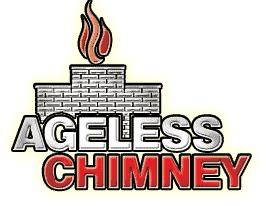Fireplace Repair in Little Germany, NY
What our clients say




Read About Us
Browse Fireplace Services
contact us
Top-Rated Fireplace Repair Services in Little Germany, NY

Why Choose Our Certified Fireplace Repair?
At Ageless Chimney, we provide expert fireplace repair services in Little Germany, NY. Our certified technicians ensure your fireplace functions safely and efficiently. We are committed to delivering high-quality service, using our extensive knowledge and skills to address all your fireplace needs.
We understand the unique needs of homes in New York City, making us your local experts. With our prompt and reliable service, you can trust Ageless Chimney to keep your fireplace in optimal condition. We pride ourselves on our professional approach and dedication to customer satisfaction. Give us a call today at 516-795-1313 to experience certified fireplace Repairs!
Certified Technicians
Our team consists of professionals with extensive experience in certified fireplace repairs.
Local Expertise
Serving New York City and surrounding areas, we understand local needs and provide tailored solutions.
Customer Satisfaction
Ageless Chimney is dedicated to providing exceptional service and ensuring the complete satisfaction of our clients in Little Germany, NY.

Comprehensive Fireplace Repair Services
Our comprehensive fireplace repair services cover everything from minor repairs to major overhauls. Whether you have a gas, wood, or electric fireplace, our skilled technicians are trained to handle all types. We start by performing a thorough inspection to identify the exact issues with your fireplace. Once we pinpoint the problems, we provide a detailed explanation and estimate for the necessary repairs.
In Little Germany, NY, fireplaces often endure wear and tear due to regular use and environmental factors. Our team is well-versed in addressing common issues such as chimney blockages, gas line leaks, and malfunctioning ignition systems. Using the latest tools and techniques ensures that all repairs are carried out to the highest standards, restoring your fireplace to perfect working condition.
Safety is our top priority at Ageless Chimney. We follow all local regulations and safety guidelines to ensure your fireplace operates safely. Regular repairs not only enhance the performance of your fireplace but also prevent potential hazards such as carbon monoxide leaks and fires. Trust us to keep your home in New York City safe and warm with our top-notch repair services.

Benefits of Regular Fireplace Maintenance
Regular maintenance of your fireplace can prevent costly repairs and ensure optimal performance. Ageless Chimney offers maintenance services designed to keep your fireplace in top condition. Our maintenance packages include comprehensive cleaning, detailed inspections, and necessary tune-ups. By scheduling regular maintenance, you can extend the lifespan of your fireplace and avoid unexpected breakdowns.
In New York City, our maintenance services are tailored to meet the specific needs of your fireplace, whether it’s gas, wood-burning, or electric. We clean and inspect the chimney, check for any blockages, and ensure the flue is in good condition. Our team also examines the fireplace components, such as the gas lines, burners, and ignition system, to ensure everything functions properly.
Routine maintenance improves your fireplace’s efficiency and enhances safety. Regular inspections allow us to detect and address issues before they become serious problems. With Ageless Chimney, you can have peace of mind knowing that your fireplace in Little Germany, NY is well-maintained and safe to use. Schedule your maintenance appointment with us today to keep your fireplace running smoothly.
Have a question?
Little Germany, known in German as Kleindeutschland and Deutschländle and called Dutchtown by contemporary non-Germans, was a German immigrant neighborhood on the Lower East Side and East Village neighborhoods of Manhattan in New York City. The demography of the neighborhood began to change in the late 19th century, as non-German immigrants settled in the area. A steady decline of Germans among the population was accelerated in 1904, when the General Slocum disaster decimated the social core of the population with the loss of more than 1,000 lives.
Local Resources
Useful links for Little Germany, NY
- Open a Little Germany, NY map
- Find the Little Germany, NY United States Post Office
- Locate nearby Little Germany, NY pharmacies
- View the current Little Germany, NY weather report
- Browse a list of Little Germany, NY public and private schools
- Little Germany, NY is located in New York county in New York State
